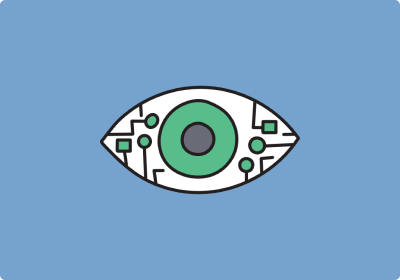WHAT IS COMPUTER VISION?
Computer vision is a field of computer science that focuses on enabling machines to understand visual information, just like human eyes if we are making things simple. A more comprehensive explanation involves developing algorithms and technology to enable computer systems to interpret images and videos. The ultimate goal of computer vision is to replicate human vision, including the ability to perceive and understand the environment, recognize objects and people, and navigate through spaces. This involves:
-
Recognizing images: identifying and categorizing objects, patterns, and features within images or videos. This is often used in applications like face recognition systems, object detection, and character recognition.
-
Object Tracking: The ability to monitor and track the motion and location of various objects in a video feed has widespread applications in different fields. In the field of surveillance, video tracking can be used to keep an eye on suspicious activity or individuals. In the realm of robotics, tracking objects in real time can help robots interact with their environment more intuitively. Finally, in augmented reality, video tracking can be utilized to overlay digital information on top of physical objects in the real world.
-
Image and Video Enhancement: To enhance the quality of an image or video, you can correct any distortions, remove noise, and make other adjustments to improve the overall visual content.
-
3D Reconstruction: Create 3D models from 2D images for VR, autonomous driving, and archaeology by implementing computer vision techniques.
-
Gesture and Emotion Recognition: We can use computer vision to detect and interpret gestures or emotional expressions from images or videos. These systems can be used in human-computer interaction, sign language, sentiment detection, and affective computing.
Computer vision is applied in various real-world applications, including autonomous vehicles, medical image analysis, augmented reality, security and surveillance systems, and even industrial automation. It relies on various techniques and technologies, including image processing, machine learning, deep learning, and neural networks to achieve its objectives. Advances in computer vision have significantly impacted industries and continue to drive innovation in areas related to visual data analysis and interpretation.
WHY SHOULD I CARE ABOUT COMPUTER VISION?
Several reasons should make you care about computer vision technology, even if you're not directly involved in the field. Computer vision has far-reaching implications and applications that can affect individuals and society. Here are some of the reasons.
-
Computer Vision Improves Quality of Life by enabling technologies such as medical image analysis, which can aid in early disease detection especially in the field of cancer detection, or assistive devices for people with disabilities for example sign language systems, this allows greater independence.
-
Computer vision in Safety and Security can be a crucial tool in security and surveillance systems, helping to identify potential threats and monitor public spaces which improve safety. This technology can help prevent accidents and fast responses to emergencies.
-
Computer vision in Automated Driving has seen the rise of autonomous vehicles which rely on artificial intelligence to perceive and navigate the environment. This technology has the potential to reduce traffic accidents, congestion in dense cities, and fuel consumption while increasing transportation accessibility.
-
Entertainment and Gaming. Augmented and virtual reality, which depend on computer vision, offer immersive experiences in gaming, entertainment, and education. These technologies are transforming how we interact with digital content.
-
Computer vision in Agriculture assists in crop monitoring, disease detection, and yield estimation, contributing to more efficient and sustainable agriculture.
-
Manufacturing and Industrial Automation uses Computer vision to improve quality control and automation in manufacturing, reducing defects and increasing productivity which then leads to reduced losses in industries.
These are some examples of why computer vision has the potential to impact various aspects of our daily lives, from healthcare and transportation to the entertainment industry and security. It can lead to more convenience, safety, and efficiency, and it's a field that continues to evolve and offer innovative solutions to various challenges. Whether you are a consumer, business owner, or industry professional, computer vision can have a significant and positive influence on your life and work.
Conclusion
To sum up, computer vision is a revolutionary technology with a diverse range of applications and advantages. By being open to its potential and interested in this field, one can experience personal growth, and career opportunities, and contribute to solving real world problems.





